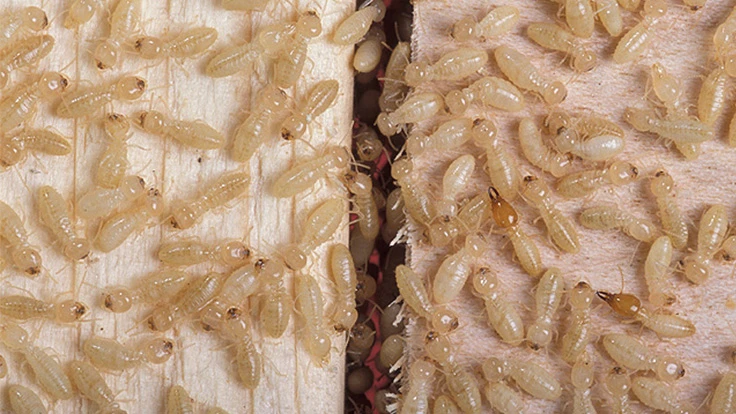
U.S. Department of Agriculture (USDA) scientists recently tested 10 commercial lumber species to learn which woods a termite favors and spurns.
Termites cause nearly $40 billion in damage globally each year and destroy parts of more than 600,000 homes annually in the United States alone. How much wood a single colony destroys principally depends on the type of termite, the type and condition of wood, and what has been done to treat the wood.
Agricultural Research Service (ARS) research entomologists Mary L. Cornelius and Weste L. Osbrink knew the heartwood of some trees contains allelochemicals, which can act as repellents and toxicants to insects including termites. The question was whether boards of lumber contain enough of these chemicals to have a real impact against termites.
Cornelius is now with the Invasive Insect Biocontrol and Behavior Laboratory in Beltsville, Maryland, and Osbrink is with the Tick and Biting Fly Research Unit in Kerrville, Texas. This research was part of the ARS Formosan termite research project in New Orleans, which has now been completed.
The researchers fed Formosan termites a diet of commercial lumber from one of 10 species of wood: redwood, birch, spruce, southern yellow pine, red oak, Brazilian jatoba, Peruvian walnut, Honduran mahogany, teak and Alaskan yellow cedar.
After six weeks, six woods—redwood, Brazilian jatoba, Peruvian walnut, Honduran mahogany, Alaska yellow cedar, and teak—showed some level of natural resistance and caused an average of better than 75 percent termite mortality. Termites found southern pine and spruce the most palatable and teak the least palatable.
Termites had significantly lower survival on a diet of teak compared to a group not fed at all, proving there is something in teak actively killing the termites.
The study also provided the first evidence that termites will eat, damage and survive to some extent on Peruvian walnut. Average termite survival on Peruvian walnut was only 16.4 percent, but the amount of Peruvian walnut destroyed was similar to that of birch and red oak, both termite-susceptible woods. So Peruvian walnut caused high mortality but also a high rate of feeding damage, unlike the rest of the woods where low survivability went hand in hand with low consumption rates.
The ranking in this study could be a guideline when it comes to a choice of lumber in major termite-ridden areas, Cornelius explained. And if the specific compounds in the resistant woods are identified, these chemicals could eventually offer the possibility of a natural treatment for wood to protect against termites.
ARS is the USDA’s chief intramural scientific research agency.
Read more about this research in the November issue of AgResearch.
(Photo: Formosan subterranean termites have definite preferences when it comes to types of wood, finding spruce (left) one of the most palatable.)
Latest from Pest Control Technology
- Donny Oswalt Shares What Makes Termites a 'Tricky' Pest
- Study Finds Fecal Tests Can Reveal Active Termite Infestations
- Peachtree Pest Control Partners with Local Nonprofits to Fight Food Insecurity
- Allergy Technologies, PHA Expand ATAHC Complete Program to Protect 8,500 Homes
- Housecall Pro Hosts '25 Winter Summit Featuring Mike Rowe
- Advanced Education
- Spotted Lanternflies, BMSBs Most Problematic Invasive Pests, Poll Finds
- Ecolab Acquires Guardian Pest Solutions





